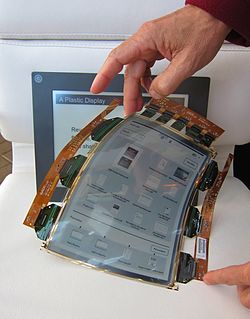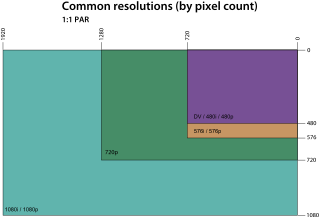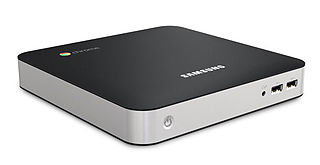A flat-panel display (FPD) is an electronic viewing technology used to enable people to see content in a range of entertainment, consumer electronics, personal computer, and mobile devices, and many types of medical, transportation and industrial equipment. They are far lighter and thinner than traditional cathode ray tube (CRT) television sets and video displays and are usually less than 10 centimetres (3.9 in) thick. Flat-panel displays can be divided into two display device categories: volatile and static. Volatile displays require that pixels be periodically electronically refreshed to retain their state. A volatile display only shows an image when it has battery or AC mains power. Static flat-panel displays rely on materials whose color states are bistable, and as such, flat-panel displays retain the text or images on the screen even when the power is off. As of 2016, flat-panel displays have almost completely replaced old CRT displays. In many 2010-era applications, specifically small portable devices such as laptops, mobile phones, smartphones, digital cameras, camcorders, point-and-shoot cameras, and pocket video cameras, any display disadvantages of flat-panels are made up for by portability advantages.

Netbook is a generic name given to a category of small, lightweight, legacy-free, and inexpensive laptop computers that were introduced in 2007. Netbooks compete in the same market segment as mobiles and Chromebooks.

Inductive charging is a type of wireless power transfer. It uses electromagnetic induction to provide electricity to portable devices. The most common application is the Qi wireless charging standard for smartphones, smartwatches and tablets. Inductive charging is also used in vehicles, power tools, electric toothbrushes and medical devices. The portable equipment can be placed near a charging station or inductive pad without needing to be precisely aligned or make electrical contact with a dock or plug.

A flexible display is an electronic visual display which is flexible in nature; as opposed to the more prevalent traditional flat screen displays used in most electronics devices. In recent years there has been a growing interest from numerous consumer electronics manufacturers to apply this display technology in e-readers, mobile phones and other consumer electronics.

Asus EeeBox PC is a nettop computer line from ASUSTeK Computer Incorporated, and a part of the Asus Eee product family. First released on August 11, 2008, the Asus EeeBox PC series is marketed as a small, light, inexpensive and energy-efficient counterpart to the Asus Eee PC netbook / subnotebook laptop series. Its motherboard employs Splashtop technology called Express Gate by Asus.
Wireless Home Digital Interface (WHDI) is a consumer electronic specification for a wireless HDTV connectivity throughout the home.

DisplayLink is a semiconductor and software technology company. DisplayLink USB graphics technology is designed to connect computers and displays using USB, Ethernet, and WiFi. It also allows multiple displays to be connected to a single computer. DisplayLink's primary customers are notebook OEMs, LCD monitor manufacturers and PC accessory vendors, supporting the Microsoft Windows, macOS, Android, ChromeOS and Linux operating systems.
Nvidia Ion is a product line of Nvidia corporation intended for motherboards of low-cost portable computers. It uses graphics processing units and chipsets intended for small products.

The graphics display resolution is the width and height dimension of an electronic visual display device, such as a computer monitor, in pixels. Certain combinations of width and height are standardized and typically given a name and an initialism that is descriptive of its dimensions. A higher display resolution in a display of the same size means that displayed photo or video content appears sharper, and pixel art appears smaller.
The history of tablet computers and the associated special operating software is an example of pen computing technology, and thus the development of tablets has deep historical roots. The first patent for a system that recognized handwritten characters by analyzing the handwriting motion was granted in 1914. The first publicly demonstrated system using a tablet and handwriting recognition instead of a keyboard for working with a modern digital computer dates to 1956.

Samsung Kies is a freeware software application used to communicate between Windows or Macintosh operating systems, and more recently manufactured Samsung mobile phone and tablet computer devices, usually using a USB connection. Samsung has released new software to replace Kies, named Samsung Smart Switch, which is mainly directed at migrating customers onto new Samsung devices. The name K.I.E.S. originated as an acronym for "Key Intuitive Easy System". After version 2.0, the name was shortened to "Kies".

A Chromebox is a small form-factor PC running Google's Chrome OS operating system. The device debuted in May 2012.
Atom is a system on a chip (SoC) platform designed for smartphones and tablet computers, launched by Intel in 2012. It is a continuation of the partnership announced by Intel and Google on September 13, 2011 to provide support for the Android operating system on Intel x86 processors. This range competes with existing SoCs developed for the smartphone and tablet market from companies such as Texas Instruments, Nvidia, Qualcomm and Samsung. Unlike these companies, which use ARM-based CPUs designed from the beginning to consume very low power, Intel has adapted the x86-based Intel Atom line of CPU developed for low power usage in netbooks, to even lower power usage.

Qi is an open interface standard that defines wireless power transfer using inductive charging over distances of up to 4 cm, developed by the Wireless Power Consortium. The system uses a charging pad and a compatible device, which is placed on top of the pad, charging via resonant inductive coupling.

A wireless keyboard is a computer keyboard that allows the user to communicate with computers, tablets, or laptops with the help of radio frequency (RF), infrared (IR) or Bluetooth technology. It is common for wireless keyboards available these days to be accompanied by a wireless mouse.

The second generation Nexus 7 is a mini tablet computer co-developed by Google and Asus that runs the Android operating system. It is the third tablet in the Google Nexus series, a family of Android consumer devices marketed by Google and built by an original equipment manufacturer partner. Following the success of the original Nexus 7, a second generation of the device was released on July 26, 2013, four days earlier than the originally scheduled date due to early releases from various retailers. The tablet was the first device to ship with Android 4.3.

AsusTek Computer Inc. is a Taiwan-based multinational computer and phone hardware and electronics company headquartered in Beitou District, Taipei, Taiwan. Its products include desktops, laptops, netbooks, mobile phones, networking equipment, monitors, WIFI routers, projectors, motherboards, graphics cards, optical storage, multimedia products, peripherals, wearables, servers, workstations, and tablet PCs. The company is also an original equipment manufacturer (OEM).